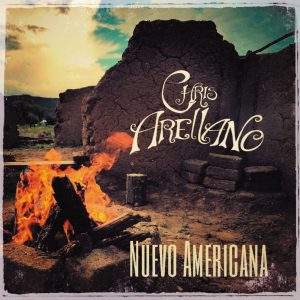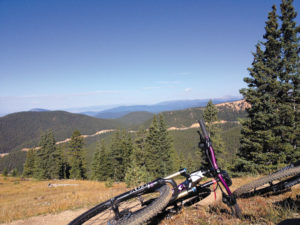The president’s promise to bring “good jobs” back to America, we are told, was a major factor in his election. These “good jobs” he and his supporters want to bring back were mainly manufacturing jobs, in heavy industries such as making steel and other metals, logging and sawing lumber, mining coal and minerals, drilling for petroleum, and assembling those basic resources into material goods from automobiles to bulldozers, trains to airplanes, hand tools to factory machinery. Big tangible stuff – most of which the workers could even afford with the high wages they were getting, back when America was great.
Those high wages, by the way, were no gift from a president or Congress, or magnanimous corporations; they were the consequence of the workers themselves literally putting their lives on the line for a fair slice of the economic pie, through a painful labor movement that resulted in unions whose strength peaked around 1980 with about 20 percent of the labor force organized. Then it went into a government-assisted decline with a new generation of workers largely indifferent. Today, not even the workers seem to want to talk about unions. Trump will take care of you.
What happened to those good jobs? Essentially the owners of the big manufactories decided they could not profitably afford to pay that much for the work, and moved the factories to places where they could pay workers less: first to the American South, then farther south to Mexico, then across the Pacific. They also began to replace many workers with robots that never strike for higher wages or even need bathroom breaks.
And how will President Trump and all the president’s men bring those lost jobs back? At this point, it begins to look like the president’s main strategy is just to eliminate as much of the regulation on American industry as possible, on the theory that the imposition of rules and regulations, for the protection and wellbeing of humans and the planet, was the principal reason for the loss of the jobs.
This approach has the Republican Congress on board – witness the legislation proposed as I write (mid-August 2017) to permit logging up to 10,000 acres of public forestland with no environmental review, no public input and no court challenges allowed. Just get out there and cut; the supply of boards will create a demand; the demand will create higher wages – or something like that. Remove the administrative state, the President and Congress say, and the mighty forces of capital development will be unleashed and make America great again. Economists argue that it is not that simple, but what do they know.
[InContentAdTwo] I find myself wondering, however, about these “good jobs” that the blue-collar part of the middle class wants back. I think some of the nostalgia might be more for the paydays than for the work itself. It is true that a lot of the heavy industrial jobs that have disappeared for human workers paid very well in the postwar decades between 1950 and 1980, but the work itself was often less than inspiring. Many of the jobs were either brutally hard on the human body, or were mind-numbingly boring – sometimes both.
As more sophisticated machinery came into action, some of the physical toll on workers was alleviated. My father was a mechanical engineer who participated in a true revolution in coal mining – the development of mechanical continuous miners and other machinery that effectively mined and loaded more coal in an hour than five or six miners with drills, powder and shovels could get out in a day.
As a smartass college boy, I asked him once if it bothered him that his machines put people out of work. He replied, “It’s work that people should not have to do.”
I got another feeling about that, however, when I came to the Upper Gunnison and started hanging out with the retired coal miners here, and a handful of hardrock miners still working in the struggling Keystone Mine. Most coal mines in the Upper Gunnison shut down in the 1950s – victims of remoteness. The higher wages demanded by John L. Lewis’s union and the railroad workers’ union, coupled with the increased productivity possible in less remote mines with my father’s revolution, made the distant Crested Butte mines superfluous. The retired Crested Butte miners had put in most of their mining years in the 1930s and 40s, before the advent of the new technology, and their bodies showed it. Fingers and hands twisted by arthritis, the shuffling walk of people with chronic back pain, eventually for many a forced departure from the high valleys due to black lung disease.
I got a glimpse of what mining was like, even in a more modern mine, when John Cobai, a Crested Butte native still contracting along with his father Emil in the Keystone Mine, took me on an informal tour of his hardrock mine. After a long slog through labyrinthian drifts, laddering up and down shafts, with gaping black-hole stopes dropping away here and there where all the rock had been removed, we reached the frontline room where another father-and-son contract team was drilling – almost invisible in a maelstrom of swirled white dust and the deafening machine-gun hammer of the compressor-driven drill.
This, I remember thinking at that moment, is work that people should not have to do. But the Cobais and Rozmans did it willingly, gladly (even though a year later white lung forced Emil to move down to Grand Junction), for the money they got for every foot of rock removed. I later met young contract miners in Silverton who felt the same way. Big bucks today weighed heavily against a diminished life expectancy down the road.
Most of the old pre-revolution coal miners had a real love-hate relationship with the work that had wracked their bodies. Some of them went to work for the ski area, as lift attendants or mechanics – an opportunity for less demanding work in clean air, outdoors in a spectacular place. But even those who worked for the resort shared the opinion of those who emphatically would not work in the recreation industry: it was not real work for a man. Mining was. As was the repetitive monotony of assembly line work, the slippery soggy danger of old-growth logging, the casual daily closeness to instant dismemberment and death for a second of inattention on the big machines in the mills for lumber, steel, cotton, what have you.
I think of the new kinds of jobs being created today – jobs that don’t pay so well, and never will so long as the workers expect someone else to get them higher wages. But those jobs are also eschewed by many men as not being real work (for real men, unspoken but understood). Most of today’s jobs involve some kind of service, from the restaurant whooper-flopper to the hospital/nursing-home attendant. These are jobs that actually require significant skills, intelligence and other qualities. A good short-order cook has to be quick and well organized mentally; a health-industry worker has to have a high level of empathy and other people skills. So, it isn’t really the level of skill and achievement that marks the difference between “a man’s work” and the work available today. What is it then?
My current hypothesis focuses on the mythic aura that surrounds American industry in what Lewis Mumford called the paleotechnic period, when men were pitting their flesh and blood and sanity against work environments where machines were really better fitted for the work. Trump’s workers seem to long for Carl Sandburg’s “City of the Big Shoulders … so proud to be alive and coarse and strong and cunning, flinging magnetic curses amid the toil of piling job on job, here is a tall bold slugger … bragging and laughing that under his wrist is the pulse, and under his ribs the heart of the people.”
And as the machines came along, that took over the heaviest and meanest work, and the big-shouldered workers elbowed their way via the unions into a fair share of the productivity gains, there was, for a fact, a brief “golden age” when the vast American infrastructure was built (no maintenance plan) and the workers who built it transformed themselves into a well-off middle class.
But then the workers let Reagan and big business undermine their unions; we let the owners move their factories to cheaper non-union labor; the good jobs that remained were co-opted by the cheaper robots; and the golden age dissipated in a haze of alcohol, opioids, and Archie Bunker anger.
Does anyone really still believe this president is going to bring back that big-shouldered golden age? Hope trudges on.
George Sibley writes from the Upper Gunnison River valleys, where he learned about paleotechnic industry as a ski patrolman skiing with a shovel before mechanized trail maintainers came along, and as sawyer turning his own logs in a small sawmill. It was close enough to “real work.”


